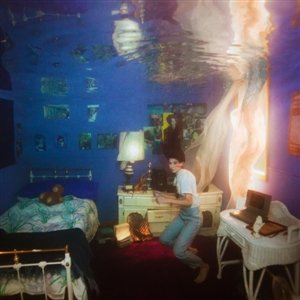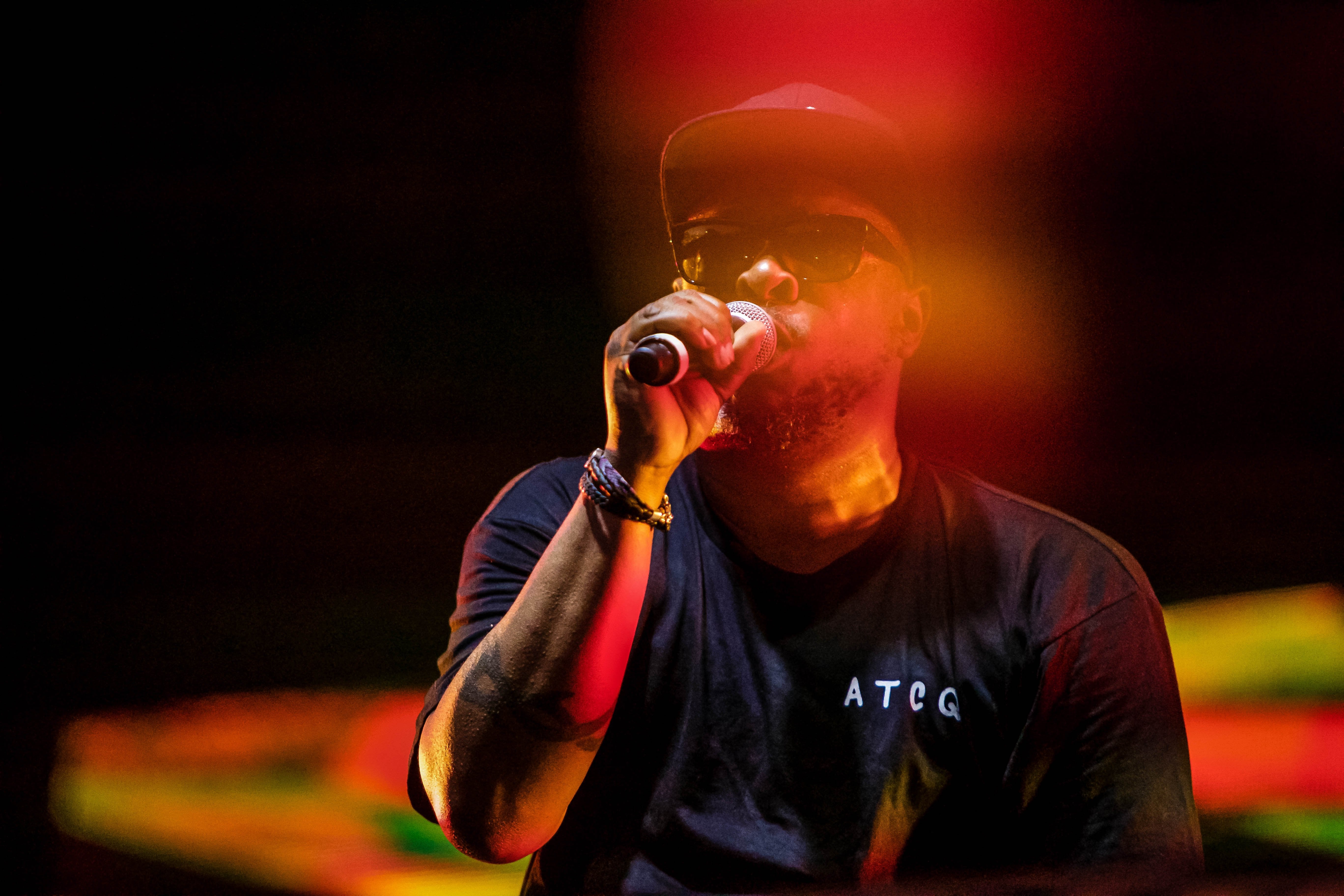Het werk doen op Pitchfork Fest
Onze verzending vanuit het beste muziekfestival
Music festivals hebben een manier om je in alle richtingen te trekken. Fysiek, natuurlijk. Zelfs op een kleinere festival zoals Pitchfork met slechts drie podia, vind je jezelf rennend over een hindernissenbaan van biertjes, dekens en lichamen, terwijl je naar de tweede helft van een indrukwekkende set luistert terwijl je vies wordt terwijl je je een weg baant naar de eerste helft van een andere. Maar er is ook het mentale, emotionele aspect. Het ervaren van achtereenvolgende artiesten die hun werk aan jou presenteren en uitvoeren, is het mogelijk om in één dag een onvoorstelbaar breed scala aan menselijke emoties te ervaren. Het is moeilijk te verwerken, op te slaan, het voor later te bewaren. Temidden van de bedrijfsponsoring en het overweldigende idee dat festivals slechts een driedaags feest zijn, is het gemakkelijk om je te laten opslokken, afgeleid te worden en alles wat je voelde of leerde achter te laten tussen de sigarettenpeuken op de grond, wakker te worden op maandagochtend en terug te keren naar wat je deed voordat LCD Soundsystem letterlijk 40 voet voor je stond.
 All photos by Amileah Sutliff
All photos by Amileah Sutliff
DAY 1
Vince Staples
At one point during “BagBak,” I made brief eye contact with Vince from the photo pit, and there was something so playful, so genuine in his eyes. I instantly fell in love, and I’ve been dealing with immense heartbreak ever since. I’ve been coping with unbelievable amounts of Sprite. Seriously though, this man radiates charisma, musically and otherwise, and seeing him live is like an AED jolt to your soul. Some people are incredible artists that don’t necessarily require you to see them live, but Vince is magnetic in the flesh. Gaining momentum and growing in his rap with his recent release Big Fish Theory, Vince played to mass of bodies and energy, proving he was more than capable of handling it.

Frankie Cosmos
Frankie Cosmos has a way of emulating the restless, lackadaisical, do-nothing/feel-everything days of young summer. With enough chill to sedate multiple herds of livestock, I wasn’t sure how her music would translate into a festival crowd. I shouldn’t have doubted her, because it took approximately two songs for us all to collectively leave our bodies, form into a mass of goofy souls, and float into a weird little cloud with her for 45 mins. The Chicago Tribune referred to the band’s performance as “nervous,” “reticent” and “unsteady,” failing to notice the generation of people to which her music appeals is often nervous, reticent and unsteady, finding odd comfort in those qualities of her music.

Danny Brown
Speaking of experiencing the entire spectrum of human thought and emotion in a single day, Danny Brown gave a head-spinning set that only Danny Brown could. Aside from the fact that he’s an impossibly great live performer, there is something brilliant, indescribably strange, wrenching about watching Danny perform. Tongue out and eyes wild, he assaults the audience with the dark narrative and electronic innovation he’s known for, quite literally come to life in from of them. Seeing him in the flesh, he becomes more than his oddball rapper persona, and the weight of his struggle sets in. The pull in two directions—falling under the crippling weight of depression and the world itself and turning the fuck up—is especially potent when you’re standing right in front of him turning up to his depression.

Kamaiyah
I think Kamaiyah’s live performance could be summed by remarks of the person I heard while I was walking away from her set: “Who was that? I love her.” A newbie fresh off her 2016 debut A Good Night In The Ghetto and an XXL 2017 Freshmen Class cover, her set wasn’t the most hyped, but she gave us the performance that no one could stop talking about. Pitchfork’s attendee age range is wide, but with her ’90s hip hop influence, undeniable current relevance, and infectious stage presence, she proved to be an absolute favorite among everyone who got to experience her set.

Arca
I don’t even know how to put into Alejandro Ghersi’s performance into words except to say: oh my god. An avant-garde DJ and producer with a knack for stunning sonics and stimuli on every single front, I knew his performance was one I couldn’t miss. I was so stunned that when he passed a bottle of champagne into the press pit, kindly asking one of us to open it as he was “busy,” I stood there with my mouth open until the photographer next to me took it. I’m still processing it. Watching him perform it live completely recontextualized and revitalized his music, setting the bar for what a performance, at its best, can really be.

DAY 2
Weyes Blood
Natalie Mering is exactly who I thought she’d be. Even in between goofy stage banter proudly proclaiming that everyone on the Green Stage that day was a huge stoner and welcoming the audience to throw joints at her, her warm, ocean-deep was moving to the core, bordering on spiritual.

Mitski
Mitski is magic. I can’t believe any of my photos of Mitski turned out as my viewfinder was covered in a layer of actual tears 15 seconds into her set. There’s nothing performative about Mitski, just pure, genuine, eloquent poetry, narrative, song. But perhaps the most moving moment was when she thanked us all, through tears: “Since I was little, this has been my dream, and now I’m here,” she said. “I hope all of your dreams come true.” Had she been someone else, that may have sounded corny, but she meant it with such intensity, it was impossible not to cry. At least everyone else around me was also a sobbing mess.

Angel Olsen
Angel walks the Millennial line between cheeky smirk and insightful pout more perfectly than any other artist making music today, which isn’t something I fully understood until I saw her live. Her intoxicating falsetto and range of vocal styles came alive in front of us in a million different dimensions and colors. Full-body feels and an incredibly tight band were punctuated by charmingly dopey banter. She proved that (refreshingly) Saturday was truly the day of the brilliant, multidimensional, unfiltered Sad Girl.

PJ Harvey
Seeing artists that have passed the peak of their popularity always garners anxiety. Will they live up to who they were? Will they fit into the context of today? Will they deliver? PJ Harvey did all of these things, and reminded us that, she too, has evolved, performing songs off her 2016 release among older jams, and baring some respectable saxophone skills. It leaned toward a calm and dark art-pop variation on the Stories From The City, Stories From The Sea PJ that I know and love, but she pulled it off with grace nonetheless.

A Tribe Called Quest
Even among all the talented young up-and-coming hip hop artists across the weekend, Tribe proved sometimes experience reigns. It was their first full live performance after founding member Phife Dawg’s death in March 2016. Q-Tip was an absolute tank, not allowing you to look away as the group demolished hits from Midnight Marauders, The Low End Theory and Thank You For Your Service. Against the backdrop of their latest release and a long, thriving career, they showed us the need and love for their influence is just as great now as it’s ever been.

Day 3

Joey Purp
Joey Purp brought everything with him for his hometown set: a massive helping of Chicago love, super soakers, Towkio, Vic Mensa, confetti and enough energy to keep the vibes going after Zay crushed it. After an increasingly rising career and fan base, he had a ton of love for his day-one fan that filled the audience and returned the love at every track. For Joey, and much of the audience, this set felt special.

Pinegrove
The Day 3 festival grounds were topped with such sizeable scattering of Pinegrove dad hats, that I just had to see them for myself. I’ve always hesitantly closet-enjoyed the alt-country indie rock emo hipster phenomenon that is Pinegrove, but after seeing my Cardinal faves in real life, I’m ready to come out and vouch for their display of raw emotion and the crushing genuineness of lead singer Evan Stephens. You can keep your judgemental hipster cowboy memes.

Jamila Woods
After an unexpected family illness took a highly-anticipated performance by the Avalanches off the day’s schedule hours before they were set to perform, Jamila Woods was moved from the smaller Blue stage to one of two main stages. As disappointing as the Avalanches news was, chicago native Jamila Woods rose to the occasion, and I don’t think anyone wanted to be anywhere but in front of her for the entire set. You could hear a pin drop as she delivered bone-chilling poetry, and she even showed us her new track “Giovanni,” accompanied by hip-hop/Pointe fusion dancers from Hiplet.

Solange
Solange was doing exactly what she said she was doing: The Work. She was a perfect embodiment of art’s capacity for personal and societal growth, art’s capacity to move in every way imaginable. In a time like this, we wake up every day and have to face the fact that there’s overwhelming amounts of work to do, and art is no exception. In addition to proving her one of the definitively Great vocalists of our generation, this is something Solange’s performance displayed with rigor, artistry, brilliance. The artists of Pitchfork each had their own way of doing The Work, but from the 20+ horn section she brought on stage with her to the precise and forward-thinking choreography to the beautiful saturated color, she proved capable of actualizing an immense vision made up of incredible, comprehensive detail.
Amileah Sutliff is een in New York gevestigde schrijver, redacteur en creatief producent, en redacteur van het boek The Best Record Stores in the United States.
Word lid van de club!
Word nu lid, vanaf 44 $Exclusive 15% Off for Teachers, Students, Military members, Healthcare professionals & First Responders - Get Verified!








